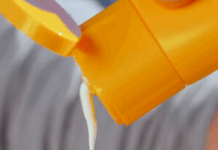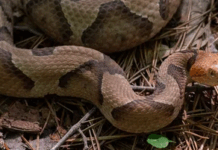Horticulture 2020 Newsletter No. 39
September 27, 2020
https://hnr.k-state.edu/extension/info-center/newsletters/index.html
Blog Post: http://www.ksuhortnewsletter.org
Video of the Week: Storing and Preserving Peppers
https://kansashealthyyards.org/all-videos/video/storing-and-preserving-peppers
Events
Kansas Forest Service Tree, shrub Seedling Sale, September 1 – October 15
Reminders
- Add organic matter to vegetable garden this fall.
- Bring houseplants in if you haven’t already.
- Dig sweet potatoes
VEGETABLES
Fall Planting of Asparagus & Rhubarb
We sometimes receive questions as to whether asparagus or rhubarb can be moved in the fall. Though these crops are traditionally transplanted in the spring (mid-March to mid-April), a fall move can be successful. Wait until the top has been browned by frost and then cut back to the ground.
Prepare the soil and fertilize as you would in the spring. See http://www.bookstore.ksre.ksu.edu/pubs/mf319.pdf for more detail on asparagus and http://www.bookstore.ksre.ksu.edu/pubs/ep99.pdf for more information on rhubarb.
Water well after planting to ensure good root/soil contact. Mulching would be helpful on the rhubarb to prevent the plant from heaving out of the soil during the winter but asparagus requires no such treatment as it is planted much deeper. (Ward Upham)
Last Tomatoes of the Season
Cooler nights are increasing in frequency now that we are into October. If you have tomatoes, you may have some that are approaching maturity. Leave them on the vine until mature or until a frost is forecast. Tomatoes will ripen off the vine but must have reached a certain phase of maturity called the ‘mature green stage.’ Look for full-sized tomatoes with a white, star-shaped zone on the bottom end of the green fruit.
When harvesting fruit before a frost, separate tomatoes into three groups for storage: those that are mostly red, those that are just starting to turn, and those that are still green. Discard tomatoes with defects such as rots or breaks in the skin. Place the tomatoes on cardboard trays or cartons but use layers of newspaper to separate fruit if stacked. Occasionally a tomato may start to rot and leak juice. The newspaper will keep the juice from contacting nearby or underlying fruit. Store groups of tomatoes at as close to 55 degrees as possible until needed. (Ward Upham)
Peppers from the Garden
Peppers are able to be stored fresh much longer than tomatoes. They can usually keep in a crisper drawer of a refrigerator for several weeks if kept moist but not wet. For longer storage, freezing works well. Though mushy when thawed, the flavor still comes through in cooked foods. Try dicing them into small pieces and then freezing on a cookie sheet. The frozen pieces can then be poured into a plastic bag for later use. Measuring is much easier as the pieces are not frozen together in a clump. This methods works just as well for hot peppers but be sure to wear gloves when handling. (Ward Upham)
TURFGRASS
Should You Let Turf Grow Tall in the Fall
Sometimes you will hear people say to let the grass grow tall right before winter sets in. Their reasoning is that the extra foliage will insulate the crown of the plant from the extreme cold of winter. Although this may sound reasonable, in practice it probably does little, if anything, to increase winter hardiness. On the contrary, a canopy that is too high during the winter may lay over and become matted down, leading to an increased incidence of winter-diseases such as snow mold.
Turfgrass species vary genetically in their cold tolerance, with warm-season grasses such as bermudagrass, zoysiagrass and buffalograss being less cold tolerant than the cool-season types such as tall fescue and Kentucky bluegrass. Given these differences, cold tolerance is improved by increasing the health of the plants going into the winter, and healthy plants are a result of a sound management program (fertilizing, watering and mowing) during the spring, summer and fall.
The lawn will benefit more from continuing to mow at the recommended height than from trying to gain some insulation against winter cold by allowing it to grow tall.
Here is a list of the recommended mowing height ranges (in inches) for home lawns in Kansas:
Tall fescue 2.5 -3.5
Kentucky bluegrass 2-3
Buffalograss 2-3
Bermudagrass 1-2
Zoysiagrass 1-2
(Note: Mowing at heights below 1.5 inches requires a reel mower).
There may be some benefits gained by adjusting mowing heights WITHIN the recommended range at times. For example, it is a good practice to mow warm-season grasses at the higher end of recommended heights during late summer and early fall because this practice should help them store more carbohydrate reserves for the winter, and it may reduce the incidence of certain cool-weather diseases. But the rule to remember is to stay within the recommended height range for your species. (Ward Upham)
MISCELLANEOUS
Amending Soils with Sand
Sand is sometimes suggested as an amendment material for clay soils. However, there is good reason to be cautious about using sand. In order for sand to be effective in breaking up a clay soil, sand grains must touch one another so there are pore spaces between grains that can hold air and/or water. If the grains do not touch, the clay fills in all the voids between the sand particles leaving no room for pores. This is the same principle used to make concrete and the result is somewhat the same. You end up making a bad situation worse. So how much sand does it take for it to be effective? Normally, we consider about 80 percent sand to be sufficient. In most cases this makes the use of sand impractical. The addition of organic matter is a much better choice. (Ward Upham)
Work Garden Soil in the Fall
Fall is the preferred time to prepare garden soil for next spring’s vegetable garden. Spring is often wet making it difficult to work soil without forming clods that remain the rest of the season. Fall usually is drier allowing more time to work the soil when it is at the correct soil moisture content. Even if you work soil wet in the fall and form clods, the freezing and thawing that takes place in the winter will break them down, leaving a mellow soil the following spring.
Insects often hide in garden debris. If that debris is worked into the soil, insects will be less likely to survive the winter. Diseases are also less likely to overwinter if old plants are worked under. Also, the garden debris will increase the organic matter content of the soil. Working the debris into the soil is often easier if you mow the old vegetable plants several times to reduce the size of the debris.
Fall is an excellent time to add organic matter. Not only are organic materials usually more available in the fall (leaves, rotten hay or silage, grass clippings) but fresher materials can be added in the fall than in the spring because there is more time for materials to break down before planting. As a general rule, add 2 inches of organic material to the surface of the soil and till it in. Be careful not to overtill. You should end up with particles like grape nuts or larger. If you work your garden into the consistency of dust, you have destroyed the soil structure. (Ward Upham)
Whiteflies on Vegetables and Ornamental Plants
We have had reports of whitefly problems various areas of the state. Whiteflies do not overwinter well in Kansas but can build up later in the season due to migration from more southern climes, buildup of local populations and introductions from transplants.
Whiteflies do not tolerate cold temperatures and will likely disappear toward the end of next week. Therefore, control measures are not needed unless you have houseplants that have been growing outside. Check carefully for whiteflies before bringing them inside for the winter. In such cases, try insecticidal soap, neem based products, pyrethrin, or Ortho Rose and Flower Insect Killer. (Ward Upham)
Contributors: Ward Upham, Extension Associate
Division of Horticulture
1712 Claflin, 2021 Throckmorton
Manhattan, KS 66506
(785) 532-6173
For questions or further information, contact: wupham@ksu.edu OR cdipman@ksu.edu
This newsletter is also available on the World Wide Web at:
http://hnr.k-state.edu/extension/info-center/newsletters/index.html
The web version includes color images that illustrate subjects discussed. To subscribe to this newsletter electronically, send an e-mail message to cdipman@ksu.edu or wupham@ksu.edu listing your e-mail address in the message.
Brand names appearing in this newsletter are for product identification purposes only. No endorsement is intended, nor is criticism implied of similar products not mentioned.
K-State Research and Extension is committed to making its services, activities and programs accessible to all participants. If you have special requirements due to a physical, vision or hearing disability, or a dietary restriction please contact Extension Horticulture at (785) 532-6173.
Kansas State University Agricultural Experiment Station and Cooperative Extension Service K-State Research and Extension is an equal opportunity employer. Issued in furtherance of Cooperative Extension Work, Acts of May 8 and June 30, 1914, as amended. Kansas State University, County Extension Councils, and United States Department of Agriculture Cooperating, Ernie Minton, Dean.




